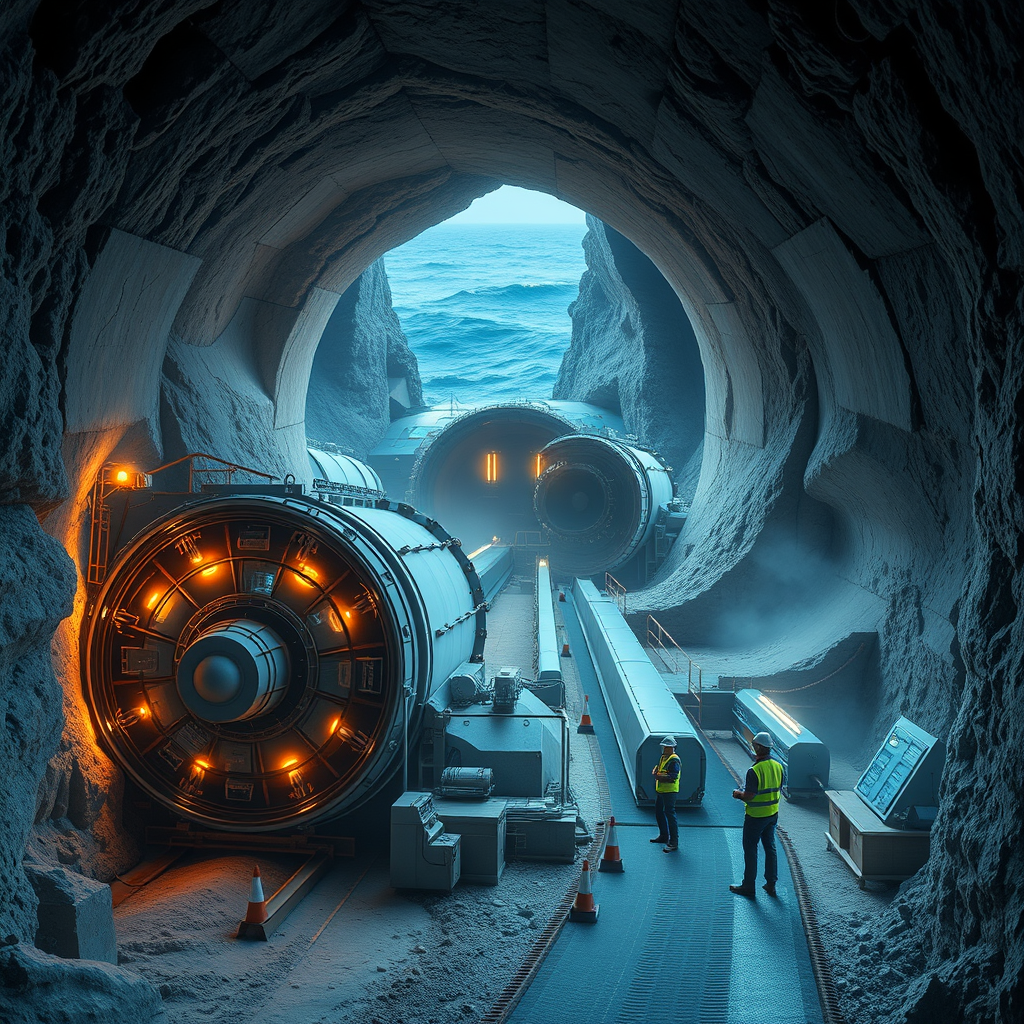In the early days of 1995, one of the most ambitious engineering projects was nearing completion—the Channel Tunnel, or ‘Chunnel,’ a marvel of modern engineering. Using eleven colossal tunnel-boring machines (TBMs), each weighing about 1,100 tonnes with a cutting-head diameter of 8.6 meters, engineers dug through chalk and marl at a remarkable rate of up to 8 meters per day. These machines weren’t just massive; they were highly synchronized, enabling precise lining, grouting, and spoil removal, which could reach 80,000 cubic meters of chalk monthly per TBM. Covering a total of 50 km, with 37.9 km beneath the sea, the Chunnel became the world’s longest underwater rail tunnel, featuring two 7.6-meter diameter rail tunnels flanking a smaller service tunnel. ***Innovation*** didn’t stop there—these tunnels allowed trains to traverse at speeds of 160 km/h, directly linking Britain and France by rail for the first time beneath the Channel. This feat of engineering not only shortened travel times but also showcased what precise tunneling techniques and massive machinery can achieve when pioneering borders away. With its blend of innovation, industrial power, and international cooperation, the Chunnel remains a shining example of modern engineering prowess. 🚧🌊
#Engineering #Chunnel #Innovation #UnderwaterTunnel #Transport #ConstructionMarvel

